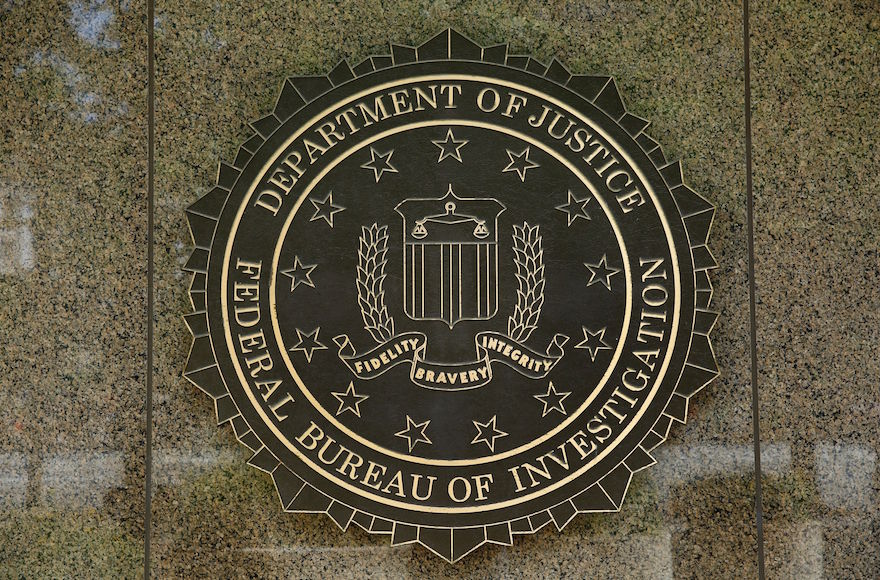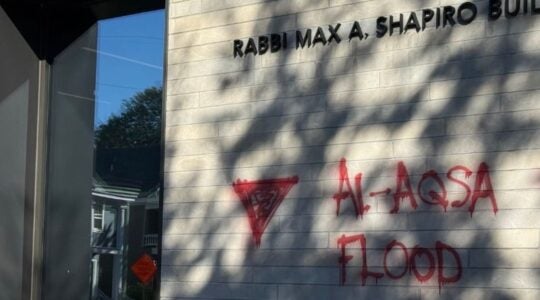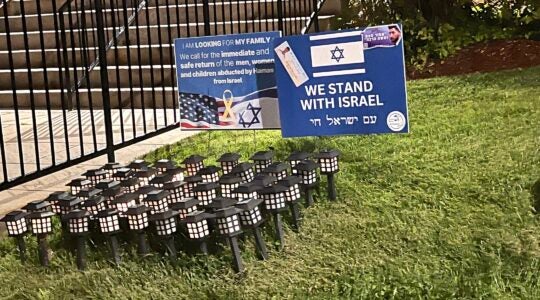NEW YORK (JTA) — A person calls a Jewish institution, makes a bomb threat and hangs up. The call lasts no more than a minute, the caller’s voice is disguised and the call is made to look as if it came from inside the building.
How do you catch the culprit?
That’s the question the FBI is facing in investigating the 65 bomb threats that have hit JCCs and Jewish federations in three waves throughout January. The latest string of threats, targeting 17 JCCs across the country, occurred Tuesday. The first waves came on Jan. 9 and 18.
Paul Goldenberg, director of the Secure Community Network, which advises Jewish groups and institutions on security, said even if the caller is one person in a room somewhere, technological advances have made identifying the perpetrator much more difficult.
“They’re sophisticated enough to leverage technology on their behalf,” he said. “They’re using a machine that masks their voice. They’re using a technology that allows them to look like they’re calling from the inside.”
None of the threats appeared to be credible, and JCCs largely were able to evacuate and resume business as usual. But security experts, including former FBI agents, said that the bureau would still take the threats seriously.
“It’s a hate crime, and they’ll throw all the resources they can at it,” said Jim Hartnett, a former FBI supervisor who now serves as director of security for the Jewish Federation of Cleveland. “They have the technology. It may take some analysis and some resources. They’ll be successful in pursuing and identifying the individual or individuals that are behind this.”
Now the FBI has to figure out how to get there by overcoming the technological disguises adopted by callers. Brenda Moxley, former assistant special agent in charge of the FBI’s criminal branch in Miami, said that investigating phone calls used to mean tracing a landline, a relatively simple procedure in comparison to the present.
A Jan. 18 call made to a Jewish institution obtained by JTA used a voice disguise and lasted one minute. The caller said the bomb was placed inside a bag, threatened to kill Jews and hung up.
“If you compare this to things that would have happened years ago, technology has changed,” said Moxley, who now serves as director of community security for the Greater Miami Jewish Federation. “Technology has advanced in ways that make it hard for law enforcement to keep up with.”
The FBI won’t comment on ongoing investigations, but spokeswoman Samantha Shero told JTA that the investigation would start with agents speaking to the people who received the calls, then pooling information among states. Retired FBI supervisor Gregory Vecchi told JTA that the key to such investigations is getting as many details about the call as soon as possible. It’s incumbent on the person who took the call, Vecchi said, to record as much as they can.
Agents can then analyze the caller’s word choice, tone and any background noise, such as sounds from a kitchen or a city street. These steps help, he said, even if the origin and voice of the caller is unknown. If agents can associate the caller with a militant group or network of criminals, they may be able to fill in the pieces.
“It’s all about the behavioral analysis and determining what we call a behavioral sign — behavior that can be actually attached to a person or group in order to do what we have to get somewhat of a characteristic of the bomber,” said Vecchi, who is now an assistant professor of criminal justice at Missouri Western State University. “Someone who doesn’t speak English as a first language will say things that are not quite right English-wise.”
Goldenberg said he’s optimistic the person or people who made the threats will be caught. But the FBI is still investigating bomb threats to Jewish institutions in two Florida cities a year ago. The statute of limitations on bomb threats is five years.
Even if there are no leads, it doesn’t mean agents will abandon the search. The case will reopen, Vecchi said, as soon as a new bomb threat comes in.
“If it’s just basically a guy calling, that’s documented in the files and it’s in the system,” he said. “Then, when the next one comes in, the investigation stays open.”
JTA has documented Jewish history in real-time for over a century. Keep our journalism strong by joining us in supporting independent, award-winning reporting.






